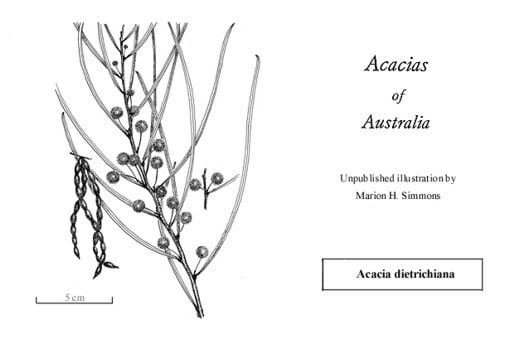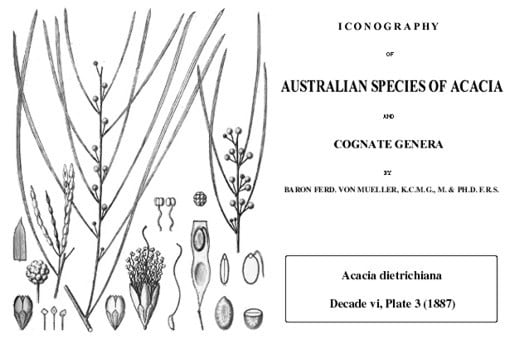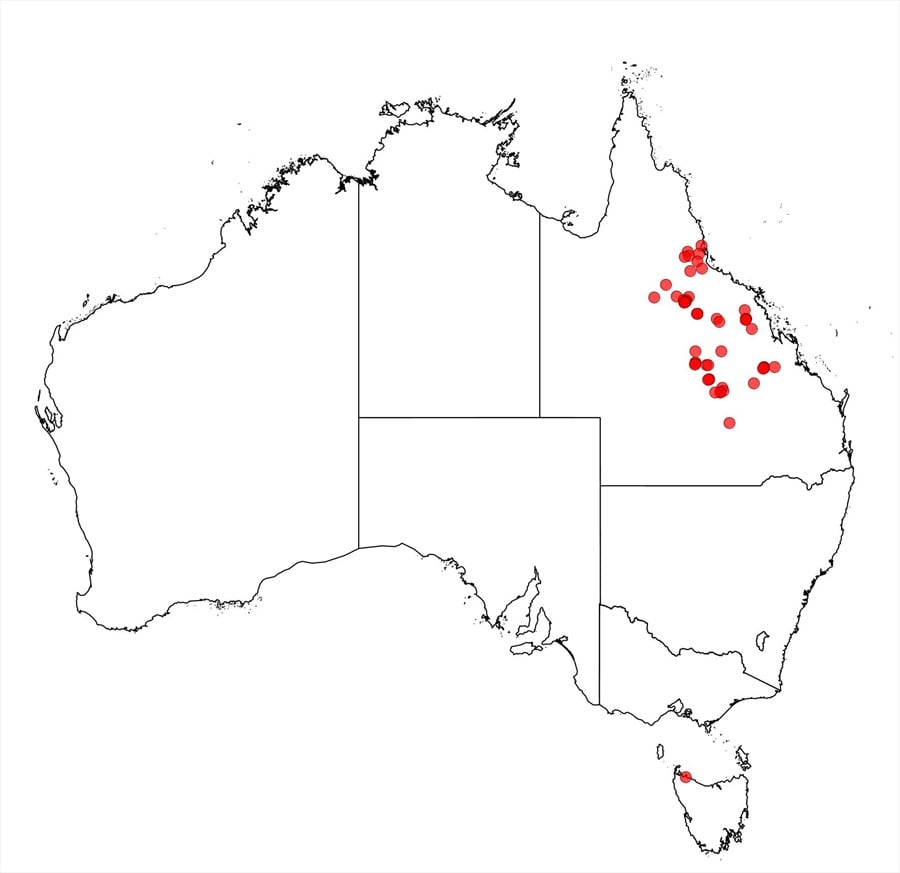Acacia dietrichiana F.Muell.
WATTLE
Acacias of Australia
Family
Fabaceae
Distribution
Widespread but uncommon in central Qld from E of Tambo N along the Great Divide to near Lucy Ck (W of Ingham).
Description
Sparingly branched shrub or tree to 6 m high. Branchlets slender, lenticellular, dark reddish brown, glabrous, viscid (vernicose when dry). Phyllodes ascending to erect, narrowly linear, straight to shallowly curved, 13–23 cm long, 1.5–5 mm wide, acute to obtuse-mucronate, with callose brown mucro, thin, not rigid, sparsely and obscurely longitudinally wrinkled when dry, glabrous, 1-nerved; gland 0–6 mm above pulvinus. Inflorescences 1–3 per axil, normally comprising 1-headed racemes with a minute axis c. 1 mm long; peduncles 8–11 (–18) mm long, glabrous, sometimes viscid; basal bract persistent; heads globular, 20–30-flowered, bright golden. Flowers 5-merous; sepals free. Pods submoniliform, to c. 6 cm long, 4–5 mm wide, thinly coriaceous. Seeds longitudinal, oblong, c. 4 mm long, exarillate.
Habitat
Grows in shallow soils derived from sandstone, in woodland.
Specimens
Qld: 21.75 km from Torrens Creek towards Pentland, N.Hall H83/48 (NSW, PERTH); Blackdown Tableland, 19.3 km SSE of Bluff, R.W.Johnson 1052 (BRI).
Notes
Most closely related to A. juncifolia. Forms of A. murrayana with long, linear phyllodes differ from A. dietrichiana by their glandular phyllode apices, longer racemes and broader pods. Superficially similar to A. dentifera from W.A.
FOA Reference
Data derived from Flora of Australia Volumes 11A (2001), 11B (2001) and 12 (1998), products of ABRS, ©Commonwealth of Australia
Author
Minor edits by J.Rogers
B.R.Maslin
This identification key and fact sheets are available as a mobile application:
URL: https://apps.lucidcentral.org/wattle/
© Copyright 2018. All rights reserved.









